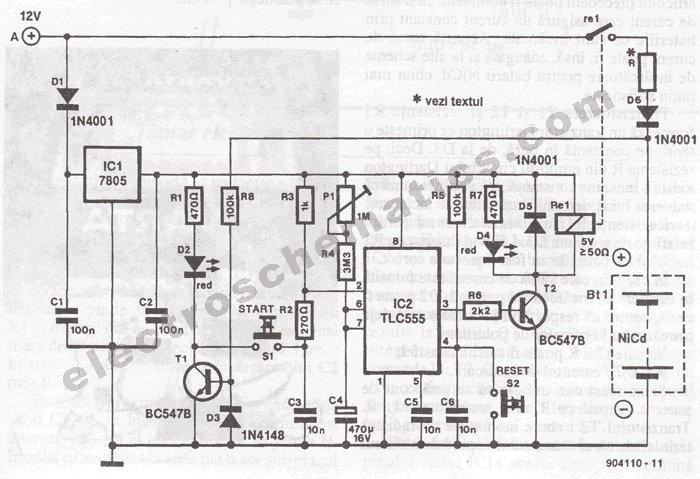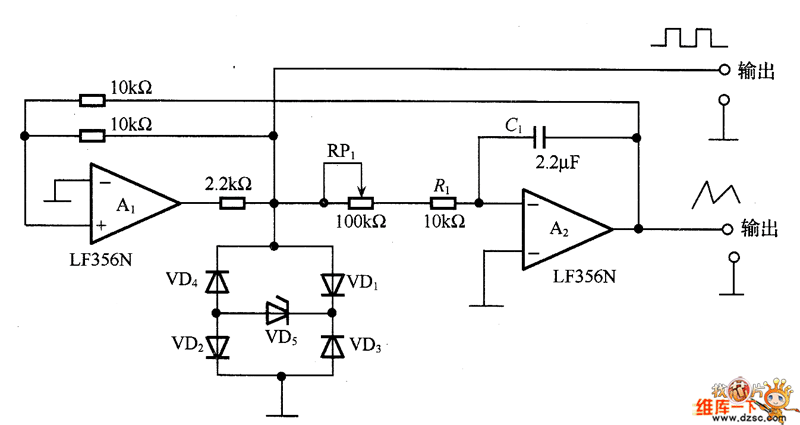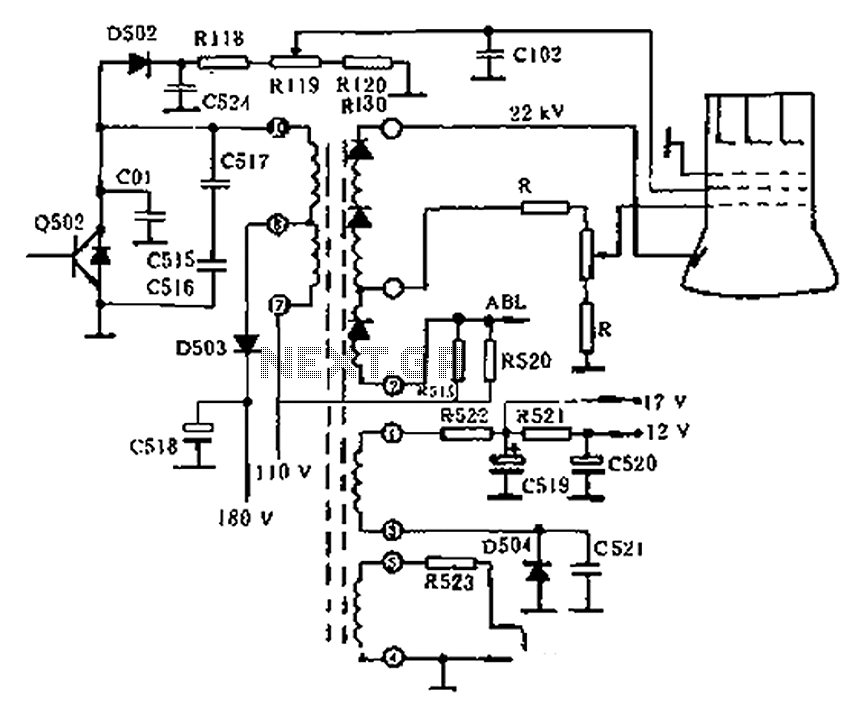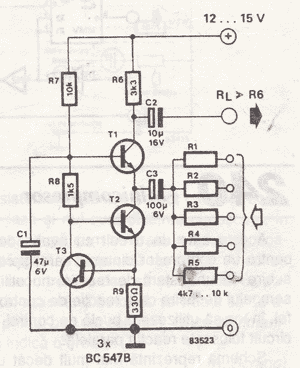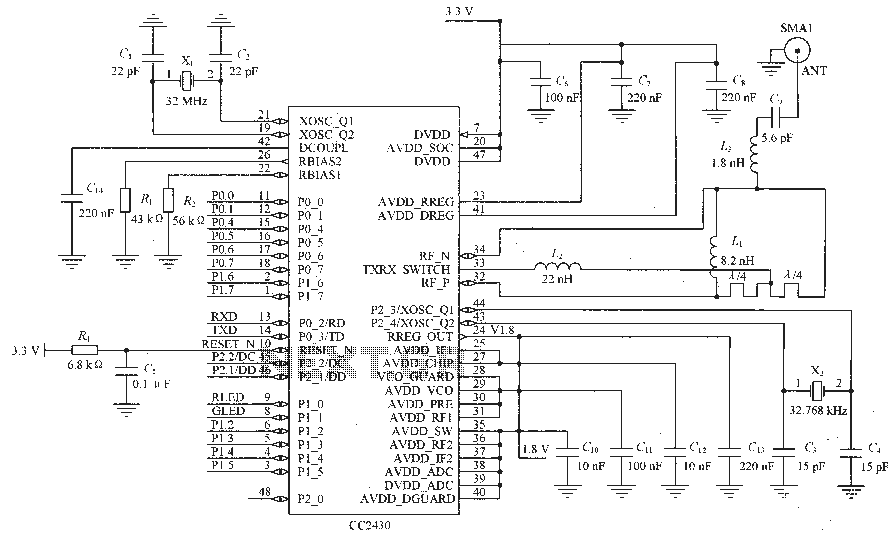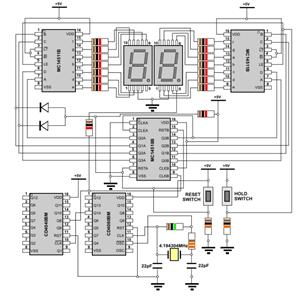
light sensor circuit using pic16c63

This light sensor circuit, utilizing a photosensor, serves as a bridge between light and electronics. It is constructed using an operational amplifier and the PIC16C63 microcontroller to control the sensor. While the circuit is not intended for precision applications, it can effectively be employed in positional photo sensing tasks without the complications associated with amplifier stability. The circuit design allows for the integration of two, six, or eight-channel programmable gain amplifiers (PGA), enabling the use of additional channels for other sensors or an array of photosensors without increasing signal conditioning hardware or consuming additional I/O pins on the PIC microcontroller. The multiplexer and high-speed conversion response of the PGA facilitate rapid sampling and conversion of the photosensor input signal to the digital domain. Channel switching is efficiently managed through the Serial Peripheral Interface (SPI) from the PIC16C63 microcontroller to the PGA. The PGA can be configured with a photosensor in two different settings, making these circuits suitable for signal responses from DC up to approximately 100 kHz. [Schematic circuit source: Microchip Technology, Inc]
This light sensor circuit is designed to interface a photosensor with electronic components, effectively bridging the gap between optical signals and electronic processing. The core of the circuit comprises an operational amplifier (op-amp) and the PIC16C63 microcontroller, which collectively manage the control of the photosensor. The circuit is not optimized for high-precision applications; however, it is well-suited for positional photo sensing applications where stability issues associated with amplifiers are minimized.
The architecture allows for the integration of a programmable gain amplifier (PGA) with multiple channels—specifically two, six, or eight channels. This design flexibility enables the incorporation of additional sensors or arrays of photosensors without the need for extra signal conditioning hardware or increased consumption of I/O pins on the PIC microcontroller. Such a setup is advantageous in complex systems where multiple inputs are required, as it maintains efficiency in both hardware and software.
The circuit utilizes a multiplexer paired with a high-speed conversion response from the PGA to ensure that the photosensor input signal can be sampled and converted to the digital domain swiftly. The use of the Serial Peripheral Interface (SPI) allows seamless communication between the PIC16C63 microcontroller and the PGA, facilitating rapid channel switching. This feature is critical in applications where real-time data acquisition is necessary.
The PGA can be configured for different settings with the photosensor, accommodating a range of signal responses from direct current (DC) to frequencies of approximately 100 kHz. This versatility makes the circuit suitable for various applications in light sensing and monitoring, allowing for effective signal processing and data interpretation in electronic systems.This light sensor circuit that is photos sensor is the gap between light and electronics. This circuit is built by op amp and microcontroller PIC16C63 for control the sensor. This circuit is not precision application, but they can be effectively used in position photo sensing applications minus the headaches of amplifier stability. This is the fig ure of the circuit. When the two, six or eight channel PGA is used in this system, the other channels can be used for other sensors or an array of photo sensors without an increase in signal conditioning hardware or PIC micro ® microcontroller I/O pin consumption. The multiplexer and high-speed conversion response of the PGA / Analog-to-Digital (A/D) conversion allows the photo sensor input signal to be sampled and quickly converted to the digital domain.
Switching from channel to channel is then easier with the Serial Peripheral Interface (SPI) from the PIC16C63 microcontroller to the PGA. The PGA can be configured with a photo sensor in two different settings. These circuits are appropriate for signal responses from DC to ~100 KHz. [Schematic circuit source: Microchip Technology, Inc] 🔗 External reference
This light sensor circuit is designed to interface a photosensor with electronic components, effectively bridging the gap between optical signals and electronic processing. The core of the circuit comprises an operational amplifier (op-amp) and the PIC16C63 microcontroller, which collectively manage the control of the photosensor. The circuit is not optimized for high-precision applications; however, it is well-suited for positional photo sensing applications where stability issues associated with amplifiers are minimized.
The architecture allows for the integration of a programmable gain amplifier (PGA) with multiple channels—specifically two, six, or eight channels. This design flexibility enables the incorporation of additional sensors or arrays of photosensors without the need for extra signal conditioning hardware or increased consumption of I/O pins on the PIC microcontroller. Such a setup is advantageous in complex systems where multiple inputs are required, as it maintains efficiency in both hardware and software.
The circuit utilizes a multiplexer paired with a high-speed conversion response from the PGA to ensure that the photosensor input signal can be sampled and converted to the digital domain swiftly. The use of the Serial Peripheral Interface (SPI) allows seamless communication between the PIC16C63 microcontroller and the PGA, facilitating rapid channel switching. This feature is critical in applications where real-time data acquisition is necessary.
The PGA can be configured for different settings with the photosensor, accommodating a range of signal responses from direct current (DC) to frequencies of approximately 100 kHz. This versatility makes the circuit suitable for various applications in light sensing and monitoring, allowing for effective signal processing and data interpretation in electronic systems.This light sensor circuit that is photos sensor is the gap between light and electronics. This circuit is built by op amp and microcontroller PIC16C63 for control the sensor. This circuit is not precision application, but they can be effectively used in position photo sensing applications minus the headaches of amplifier stability. This is the fig ure of the circuit. When the two, six or eight channel PGA is used in this system, the other channels can be used for other sensors or an array of photo sensors without an increase in signal conditioning hardware or PIC micro ® microcontroller I/O pin consumption. The multiplexer and high-speed conversion response of the PGA / Analog-to-Digital (A/D) conversion allows the photo sensor input signal to be sampled and quickly converted to the digital domain.
Switching from channel to channel is then easier with the Serial Peripheral Interface (SPI) from the PIC16C63 microcontroller to the PGA. The PGA can be configured with a photo sensor in two different settings. These circuits are appropriate for signal responses from DC to ~100 KHz. [Schematic circuit source: Microchip Technology, Inc] 🔗 External reference
